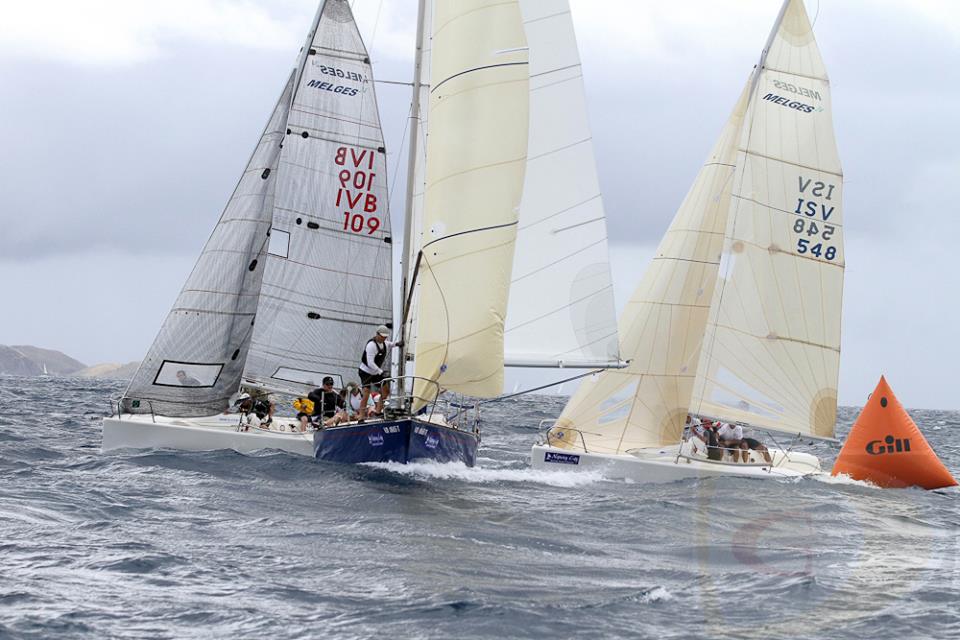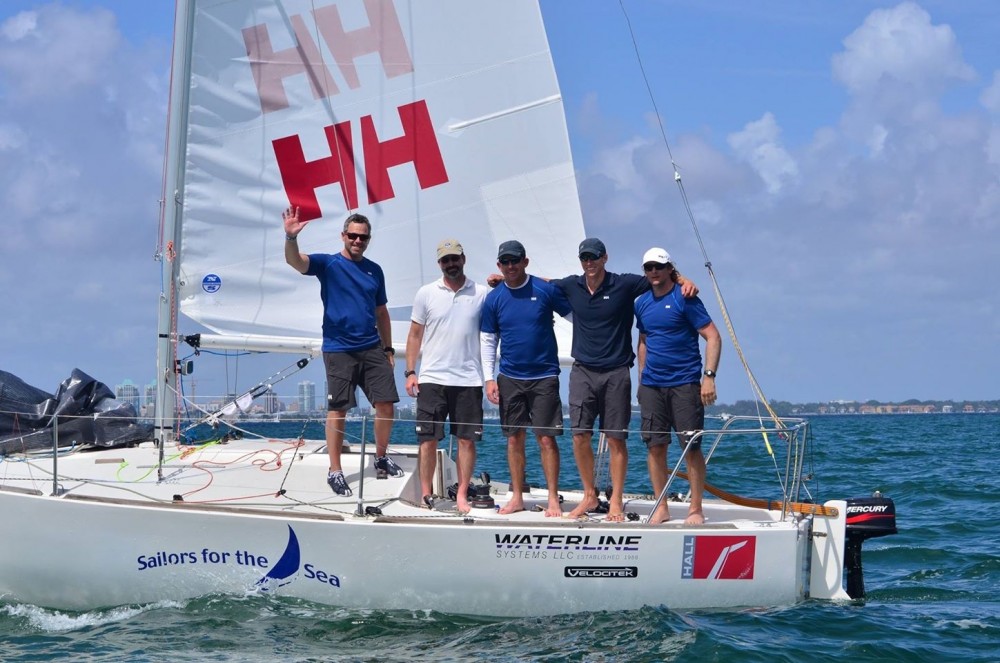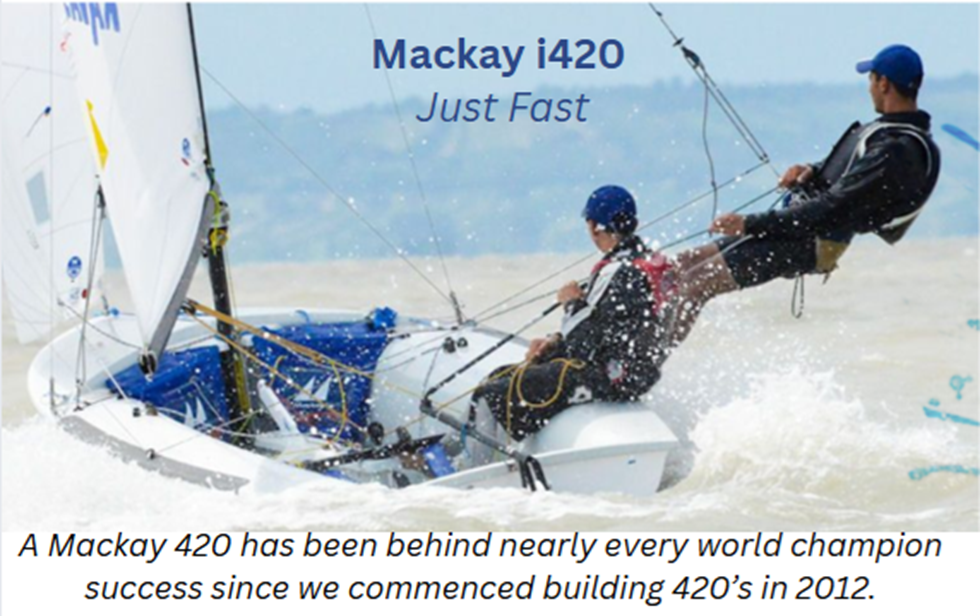By Andrew Kerr
This article takes a look at the important elements of rounding the windward mark and offset mark with some key elements in mind for teams using a symmetrical spinnakers, with a few exceptions the vast majority of the elements that we explore apply to Asymmetric boats well. In this article we will look at the boat handling skills a team needs to practice & develop, in a future article we will look at tactics we can use at these marks. Even if your team does not anticipate sailing with an offset mark a great deal, the vast majority of the information below will help your team be smoother at the windward mark rounding.
Approaching the windward mark
- Hike hard coming in to the mark so the boat is flat and fast!
- When the bow person sets the pole, hike especially hard and if possible pull the pole topping lift up from the hiking position
- If it is a long sail to the offset mark then delay setting the pole until you have rounded the windward mark to minimize disruption – particularly in heavy or very light conditions – the caveat to this is if you can set the spinnaker between the marks.
- Ease the vang a couple of inches (be sure to re-cleat it!) to the preset downwind mark to help preset the mainsail leech tension for downwind sailing and also to help the boat bear away by opening the mainsail leech.
- The headsail trimmer really wants to focus on perfect trim of the sail and not be distracted – particularly important if sailing in dirty air from another boat or getting lifted into the mark requiring the Jib to be eased for max speed.
- Top skippers keep the boat going fast at all times – keep the boat rolling and be sure not to pinch too much , have the crew keep calling out waves and puffs all the way into the mark so you can be anticipating the elements. This is a chance to extend on boats behind you and catch boats ahead, boat length by boat length.
- Don’t pinch – if on a tight lay line to the mark – take the mark out of the picture and go fast, the lift off the foils will very often give the team the added pointing it needs. It’s all too common for a team to pinch too much initially and not make the mark anyway.
Between the windward mark and the offset mark – sail fast!!
As a coach I observe and video tape a lot of races and one of the common threads is the gains and losses for teams when sailing between the marks – particularly in the extremes of conditions – very light or heavy air.
Key elements for sailing fast between the marks:
- Trimming the sails well – keep the headsail tell tales flowing – this does mean easing it and when it is time to set on smaller boats the trimmer can grab the clew of the sail and pull it inboard to facilitate the spinnaker going up smoothly and not getting trapped between the leech of the Genoa and the boom and helps the foot of the sail pre feed easier.
- On boats with skirt lines attached to the foot of the genoa (like a J24) the bow person skirts the foot of the sail inboard of the lifelines to help with the pre feed of the spinnaker foot.
- Particularly when it is breezy – sail the boat flat and not allowing excessive heel.
- When it is light – minimizing movement and being smooth will maintain momentum and speed.
- Determine how much pre feed on the spinnaker foot you want – if it is light then gently feed the foot out so that it doesn’t disrupt the headsail, if it is breezy then you may want to delay until the boat is around the offset mark and flat and pointed downwind so that the foot of the sail does not get out of control. In medium conditions you likely will be able to pre feed most of the way but be careful of the sail touching the offset mark or a leeward boat.
- Take an opportunity in light/ moderate conditions to ease the Cunningham (if on at all) all the way off and the outhaul to the eased setting for downwind sailing.
- The bow person can point to the offset mark to help the skipper gauge where it is as well as the middle looking to leeward helping keep track of it.
Setting the spinnaker between the marks
With the wind veering to the right and your team getting lifted on starboard tack going into the mark there may be an opportunity to set between the marks, here is a check list for this:
- Make sure you get a good visual on where the offset mark is – it is easy to lose sight of it when pre feeding the spinnaker, the bow person ( as mentioned earlier) or trimmer or tactician can help point out where it is and if possible the skipper needs to get themselves in a good place for them to see it. One helpful trick is if you are approaching the windward mark on port tack is to have the skipper take a quick glance at the angle and distance of the offset mark in relationship to the windward mark so that if they have to tack at the windward mark they have a good idea where the heading of the bow has to go immediately once the tack is completed.
- If there is a boat to leeward of you and slightly ahead of you (preventing you from bearing away)- head high and then bear away and go behind them – this will give you the ability to set and get inside and be able to jibe at the offset – you don’t want to be pinned outside them. In this situation the likelihood is that the team will need to jibe to port quickly with a right shift to get in phase with the wind – current and wind shadows and other strategic needs notwithstanding.
- Be sure that the leeward twing is all the way off and the windward twing all the way on.
- Caution – if the twing line is too long it can scoop the offset mark – has them long enough but not too long!
- Pull the guy back so that the pole is at least 9 inches to almost a foot off the forestay – the guy will stretch this much at least on a reach when the spinnaker fills.
- Luff the spinnaker if necessary to get the spinnaker halyard all the way to the top and then sheet in.
- If breezy – delay pulling the Jib down to keep the weight on the high side until the boat has flattened out. In this instance if you have the spinnaker and Genoa up at the same time be sure to keep the Jib sheet well eased to allow the spinnaker to fly – if it is slightly over trimmed the sails forms a vacuum of stall and collapses the spinnaker.
- When bearing off at the offset mark ease the spinnaker sheet first and that will make squaring the pole much faster and easier, sounds simple but a lot of teams have difficulty squaring the boat back smoothly – particularly on bigger boats or when it is windier.
Rounding the offset Mark
Look to round the mark tactically if at all possible – aim half to three quarters of a length to windward of the mark and then smoothly turn down while giving the main a good and fluid ease, the goal is to minimize the loss of the turn, very often teams button hook turn around the mark and end up losing a lot of speed and also end up way wide with other teams getting inside them.
- Backstay off as soon as you can and when possible organize the Main traveler so it is centered, assuming the mainsheet is long enough.
- As soon as you possibly can make sure you have a crew member looking back for velocity and the angles of other boats – gets this dialogue going as fast as possible – this is critical.
Hoisting the spinnaker in light air at the offset mark
Be sure to keep the pole forward as the apparent wind is well forward – slightly over trim the spinnaker sheet and when the boat speed and apparent wind angles start to get closer together then slowly start to bring the pole aft. Pulling the pole aft prematurely in light air is a common mistake and will collapse the spinnaker every time, watch for this, particularly with a new trimmer or fill in crew member.
It’s all in the details
- Put a series of marks ( or with tape on the solid part if you have a solid vang) on the vang so you know how much to ease it to set the mainsail
- Leech tension with the top baton parallel, or more open if in planning mode to the boom once you are downwind
- Mark the topping lift so that the pole is set to the correct height
- Mark the spinnaker halyard so you know when it is fully hoisted
- Do a practice bear away set and mark the spinnaker sheet & cleat it when the pole is squared and the sail full. This pre set mark will allow you to focus on pulling back the guy on the set and free a hand up with the spinnaker filling nicely.
Conclusion
All the above is well worth practicing – there are good gains to be had here for your team and over the course of a series the points gained will add up.
In a future article we will examine some tactics your team can use at the windward and offset mark.
Good sailing!





